| Botanical Name |
|
| Family |
Geraniaceae - The geranium family. |
| Pronunciation |
pe-lar-GO-nee-um ren-ih-FOR-me |
| Common Name(s) |
English: Kidney-leaved pelargonium; Rabassam
Afrikaans: Rooirabas; Rooirabassam
IsiXhosa: iYeza lezikhali; iKhubalo
|
| Plant Group |
- Ground Cover A plant with a low-growing, spreading habit, grown specifically to cover the ground.
- Perennial A plant whose life cycle lasts for three or more seasons.
|
| Plant Size |
- Medium
| Tree | 10m to 16m |
| Shrub | 1m to 2m |
| Perennial/ground cover | 40cm to 60cm |
| Bulb | 40cm to 60cm |
| Succulent | 40cm to 60cm |
|
| Position |
- Partial Shade The area is in shade for part of the day and in full sun for part of the day.
- Sun The area is in full sun for all or most of the day, all year round.
|
| General Information |
- Drought Tolerance: High The plant is well adapted to arid conditions; it can survive long periods of drought and high temperatures without extra water.
- Evergreen Plants that have leaves all year round.
- Fragrant / Aromatic These plants posses a strong, usually pleasant odour.
- Frost: Half-hardy The plant is able to survive low temperatures and some frost but requires protection against severe frost.
- Water Wise Plant species originating from low rainfall regions that require less water to survive and thrive than other plant species.
- Wind Tolerant Plants able to withstand the effect of strong winds.
|
| Specific Information |
Pelargonium reniforme has clusters of greyish-green leaves with a velvety texture. A versatile plant flowering almost throughout the year, that I have found resistant to the usual diseases that affect hybrid pelargoniums. It grows in full sun and if watered occasionally, will grow quickly as a ground cover. In hotter, drier positions the leaves are smaller and greyer, and the plants grow in tighter clusters.
|
| Ad Break |
|
| Flowers |
| Description |
Small blooms on long, slack stems in great profusion.
|
| Season |
- Spring to Autumn Plants will seldom bloom for the entire season as given in the list, but should flower during a period within these parameters.
|
| Colour |
|
| Growth Rate |
- Moderate to Fast Specifying growth rate can be very misleading as there is considerable variation of growth rate depending on type and species of plant, available water, supplementary feeding, mulching and general care, as well as the plants suitability and adaptability to the garden environment.
|
| Plant Uses |
- Attracts bees, butterflies or other insects This plant attracts insects which can be food for birds or other creatures in your garden.
- Border A strip of ground, at the edge of a driveway or path in which ornamental plants or shrubs are planted.
- Container Trees, shrubs and ornamental species that can adapt to growing in a restricted environment.
- Filler Either a fast growing tree or shrub used temporarily to fill in an area while the permanent plants grow to a desired size, or a plant used to fill gaps in borders or beds.
- Ground Cover Low-lying plants that spread fast, require minimal maintenance, and cover large expanses or bare areas between bulbs or shrubs. They provide protection from erosion and drought and improve the visual appearance of the garden.
- Mass Planting Plants useful for filling a large area with just one or a few kinds of plants spaced close together. Creates a bold, dramatic effect and to reduces maintenance.
- Pioneer for new gardens A very fast growing plant, able to withstand hardship, that can be used to populate land that has recently been cleared of natural vegetation. These plants pave the way for slower-growing species by adding nutrients to the soil and creating leaf litter.
- Retaining Walls Shallow rooted plants for cascading over dry stone walls or planting in hollow spots in retaining blocks.
- Rock Garden An area constructed of larger rocks, arranged naturally, to emphasise the use of stones as a main element. Generally plants used do not need a lot of care.
- Stabilize Banks Plant is used to prevent soil erosion because their roots will form a mat that stabilizes the soil and keeps it from washing away in heavy rains.
- Suitable for coastal gardens Plants adapted to dry, sandy soil, forceful wind, limited rainfall and intense sunlight.
- Wild Garden An indigenous garden planted for the benefit of wildlife and birds. Provides food, water, a variety of mini-biomes and no poisonous chemicals are used.
|
| Distribution and Habitat |
Endemic to the Eastern Cape Province from Kynsna to Umtata, in fairly dry flats which are subject to occasional veld fires
|
| Planting Suggestions |
Plant Pelargonium reniforme in well-drained soil to which some compost has been added. Top dress with a slow release fertilizer in spring if necessary, but don't over-feed. Flowering throughout the year will be greatly encouraged by occasionally cutting off old flower-heads. Remove dead leaves and old flower stalks in winter.
|
| Medicinal Uses |
The leaves and roots of Pelargonium reniforme are much used for medicinal pruposes. An infusion of leaves or a root enema for diarrhoea, dysentery and vomiting. Eaten raw as vegetable to treat dysentery, nausea, vomiting and fever. Bruised leaves soothe skin rashes, and are used in tea to treat kidney and bladder ailments, nausea and gonorrhoea. A root decoction is made for severe diarrhoea. The powdered root is mixed with food for dysentery and a leaf paste is used for wounds.
|
| Ad Break |
|


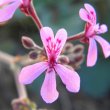
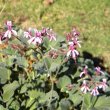

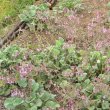
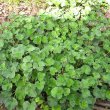
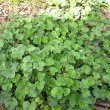


Comments
Pelargonium reniforme
Is there another name for pelargonium reniforme...for example Taraxacium officinalis (dandelion) and Foeniculum Vulgrate (fennell)
Kidney-leaved pelargonium
Hi Sandy
Apart from the names listed above under 'Common names', I have also discovered that this plant is also called Kidney-leaved Crane's Bill.
Nutmeg pelargonium
nutmeg pelargonium to me
Nutmeg pelargonium - Pelargonium fragrans
Hi Diana
Colloquial names are often used for various species, but I haven't come across this one before. The plant I know as Nutmeg pelargonium is Pelargonium fragrans - see http://kumbulanursery.co.za/plants/pelargonium-x-fragrans-hybrid
While I was checking through my resources, I found a most explanatory article about this plant at http://www.plant-and-flower-guide.com/pelargonium-fragrans.html, with a list of all the Pelargonium fragrans varieties. Interesting.
This is also a great plant - good shape, plentiful flowers and long lasting.
Kind regards
Lorraine
complicated!
thanks. The species I bought at Kirstenbsoch Indigenous Plant Sale - was this one, sold as nutmeg. Lost that plant and was given a cutting ... which looks like the other, hybrid.
Hi Diana
Hi Diana
Very complicated. There are more or less 280 varieties of Pelargonium in South Africa, quite apart from the vast number of hybrids that have been bred across the world.
Regards
Lorraine
interesting
i have been looking for the scientific name of this plant for so long as i am using it in my MSc research. its called jongilanga by othe Xhosa people as common names usually vary. really hard to tell which one it is exactly without focusing on the detail of the leaves, given that mine doesnt have flowers.
thank you so much for this page. you have bailed me out
Discuss this plant
Share knowledge, ask a question or give an experience.